PHILADELPHIA — Rare conjoined twins, who beat the two-percent chance at survival associated with separation surgery, are now celebrating another accomplishment — graduating kindergarten.
At just 11 weeks into her pregnancy, their mother, Heather Delaney learned that she was carrying conjoined twin baby girls. These girls were craniopagus twins, connected at the head, and the prognosis for their survival was bleak. However, they defied the odds.
Heather gave birth to her daughters, Abby and Erin, at 30 weeks in July 2016, with a combined weight of just six pounds. Heather and her husband, Ryley Delaney, were overjoyed despite the girls needing to stay in the neonatal intensive care unit at the Children’s Hospital of Philadelphia (CHOP) — a full 10 hours from their home.
In June 2017, the girls underwent a rare and pioneering procedure to separate their skulls at CHOP. Despite the risks, the 11-hour operation was a success. While both little girls face developmental difficulties, they are thriving as they approach their seventh birthday. The proud parents, Heather and Ryley, watched their girls graduate from kindergarten in June 2023 — a milestone doctors doubted they would ever reach.
“There are days now where I sit back and think ‘I cant believe how incredibly lucky we are,'” the twins’ mother says in an online video. “Yes, they have disabilities and things they’re working through, but they’re so happy.”
“Watching them graduate, it was like we were dreaming. It’s one of those things where you feel like it’ll never come. We don’t yet know what they can accomplish so the sky is the limit for them. Although they don’t remember, they see photos in the house of when they were conjoined. One day we’ll sit them down and talk about it properly – we want them to be proud of who they are and where they’ve come from,” Heather continues.
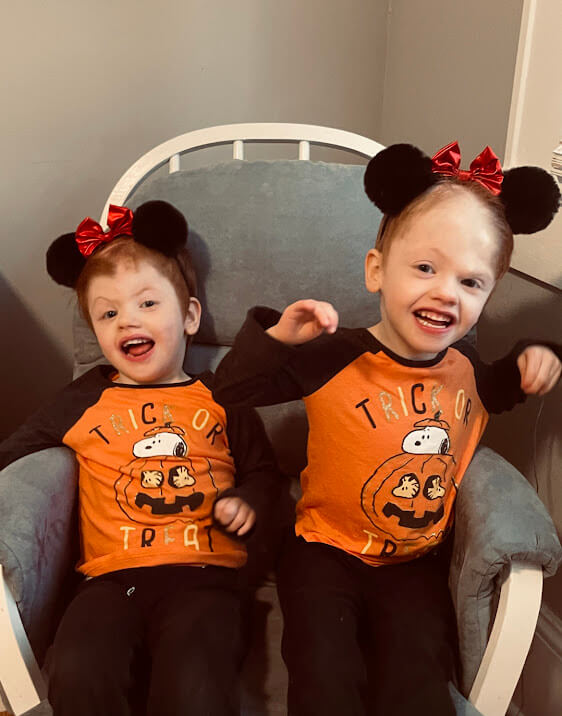
New parents, Heather and Ryley, were filled with fear upon learning that they were expecting conjoined twins. Doctors informed them that the odds of having craniopagus twins – twins joined at the head – were a staggering one in 2.5 million.
Despite the daunting two-percent survival rate, the parents received hopeful news that their unborn girls might qualify for separation surgery after birth. Heather became an inpatient starting from her 27th week of pregnancy and naturally went into labor at 30 weeks.
Abby and Erin, connected at the skull, were delivered via cesarean section at 1:02 am on July 24, 2016, at the Children’s Hospital of Philadelphia.
“When we first found out we went into shock first, we had no idea what to think,” Heather says in a video. “It’s something you only see on TV, I thought this doesn’t actually happen to people.”
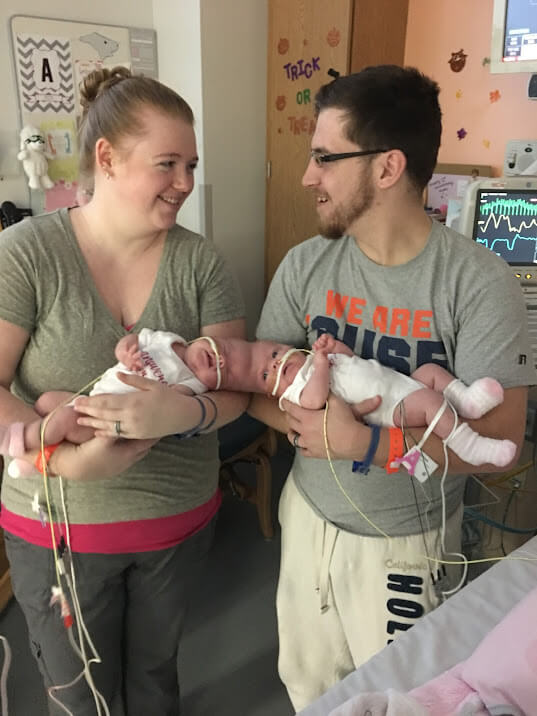
Abby and Erin shared a skull, skin, and their superior sagittal sinus – a crucial vessel that drains blood away from the brain. Weighing a combined six pounds, the twins were kept in the NICU in Philadelphia until their scheduled separation surgery the following June.
This would be the first separation surgery of its kind at the hospital, due to the rarity of the twins’ condition. The procedure carried significant risks, ranging from mild brain damage to death. The girls underwent several minor surgeries in preparation for the separation.
On the fateful day, June 6, 2017, the parents could do nothing more than “pray really hard” as the surgeons got to work. Following the exhausting 11-hour procedure, the parents described the situation as “touch and go,” particularly with Abby, who lost a substantial amount of blood during surgery.
“Abby lost 10 to 15 times her blood volume, we were told,” the twins’ mother continues. “They replaced her entire body’s worth of blood several times when the surgeons had to clip her sagittal sinus to separate her from Erin. They had a hard time stopping the bleeding afterwards. The surgeons actually told us they had never given that much blood to a patient in one go before and the patient had survived.”
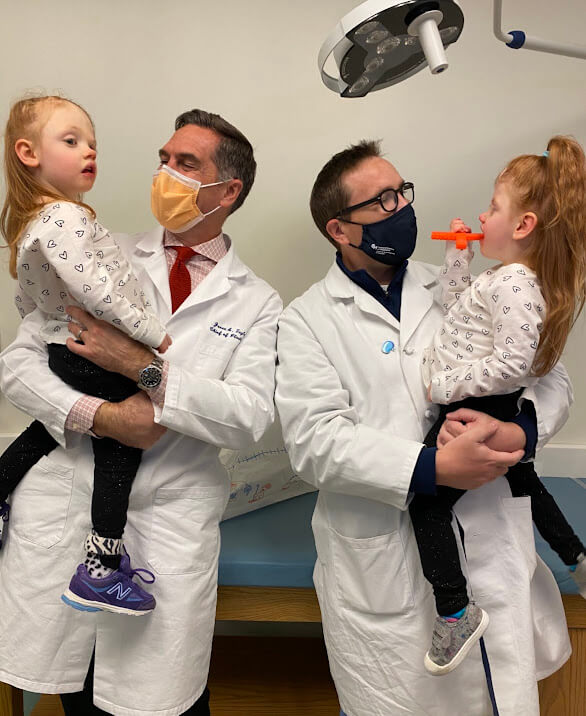
Following the surgery, both girls had to remain connected to machines in the hospital while they stabilized. Erin coped a little better than Abby, who had lost more blood during surgery and required a cocktail of medications and support due to the onset of seizures.
“I definitely remember the day after the surgery, I didn’t sleep for two days,” Heather recalls. “When everything finally settled about 48 hours after the surgery, and there weren’t 15 to 20 people in the room at all times, I was finally able to take a breath.”
It took five months before both children could finally be discharged from the hospital to return to their home in Statesville, North Carolina. Both girls were left with intellectual disabilities, causing slower development. As they approach their seventh birthdays, Heather shared that developmentally, the girls are around the 15-month mark. Currently, both are non-verbal, but Erin has been walking since she was five, and now Abby is starting to walk as well.
“When Abby can run too, I’ll be in trouble – it’s hard enough chasing one,” their mother says.
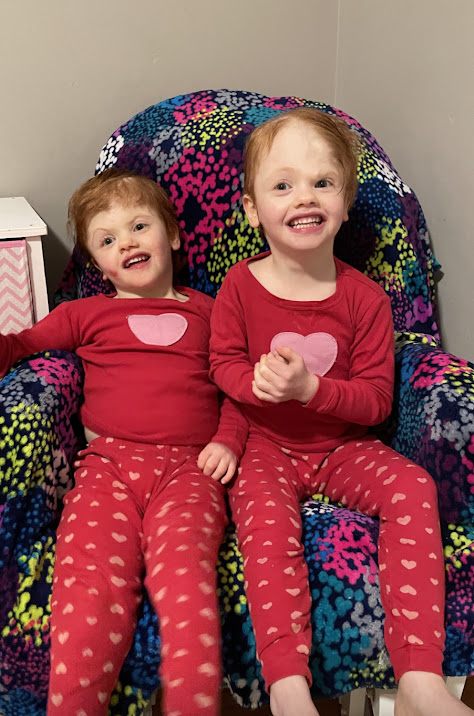
The girls attend a mainstream school but are placed in a special class to receive support for their needs – and Heather says they’re thriving. Earlier this month, they graduated from kindergarten, a milestone the parents could have never dreamed of when the twins were infants.
At their graduation, Erin got a “dolphin award” for her “adventurous heart” and love for exploring. Abby received the “deer award” for being a “gracious friend who treats all people in a gentle and kind way.”
“Before their separation there hadn’t been many of that kind done anywhere in the world. So there wasn’t much to look at that was good before the surgery – it was definitely scary. Now look at them – I’m so proud of them both. It has always been our goal in sharing our story to try and reach any other parents faced with the same type of pregnancy we were – to give them hope. We want to show there is the possibility they can be separated and then lead healthy and happy lives,” Heather says.
South West News Service writer Amy Reast contributed to this report.

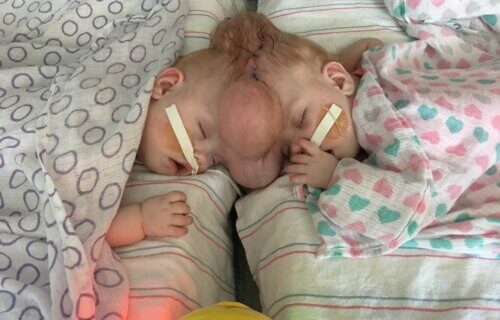
Congratulations.im so Happy for all of you…the Lord heard your prayers..God be with you always.❤️🙏🙏😇